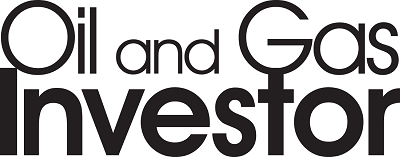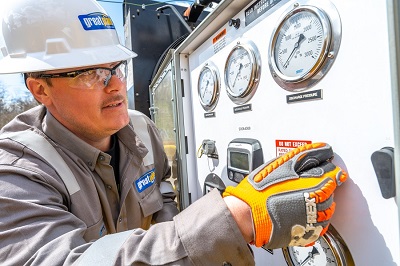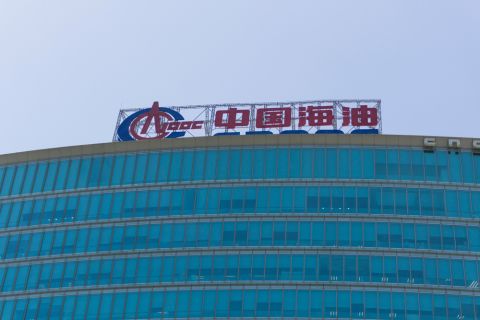Presented By:

Oilfield services firm Patterson-UTI has emerged from the pandemic with its business growing, its balance sheet thriving and its innovation driving the industry. Its six-month average operating rig count of 131 matches pre-COVID-19 activity, and its share price has rebounded more than 20% during the same period, remaining stable during first-quarter 2023 at values comparable to 2019.

In an exclusive interview with Hart Energy’s Deon Daugherty, Oil and Gas Investor editor-in-chief, Patterson president and CEO Andy Hendricks discussed the company’s strategy in the Permian Basin and throughout the nation, where Patterson is deploying state-of-the-art rigs capable of producing greater volumes — faster and more efficiently.
Deon Daugherty: What are the biggest opportunities that you see in the Permian Basin?
Andy Hendricks: The biggest opportunity is around people and the workers. The industry has been ramping up so fast over the last couple of years that we've all had a fair amount of turnover. Even though we’re still going to grow in the Permian, going forward, it’s going to be more moderated. And I think that'll give us a chance to get some stability in the workforce.
DD: And now, what are the biggest challenges you face in the near term?
AH: We have to plan for both the near-term and the long-term. Overall volatility in commodity prices and the recent decline in natural gas prices has created uncertainty for our E&P customers in the near-term, depending on the basins where they operate. And while the overall rig count is down since the beginning of the year, the Patterson-UTI rig count has been nearly steady as we only operate AC high-spec rigs. In fact, we are at a higher level of activity than in January 2020. The decline in the overall rig count this year is due to releases of older mechanical and SCR rigs. Those declines don’t affect us, as we are well positioned in multiple basins with higher technology and have strong partnerships with customers as well a diverse customer mix.
However, this near-term environment of operator concern creates some challenges for us to plan our forward activity, which is important for us to be able to update our resource plan and ensure we have the training for crews in progress to either sustain or grow activity levels. Planning forward activity is also crucial for our capital budget for the remainder of the year and to get ahead of long-lead items such as drill pipe and structural steel.
The longer-term outlook is more positive, and it is still early in the year. If oil prices recover to a reasonable level, even with the gas market soft, based on discussions we are having we could see an increase in the industry AC high-spec rig count and an increase in the frac spread count before the end of the year, which means our activity could still increase. We always adjust as needed, but we have to be ready as well.
DD: One of the industry’s key refrains is that it's a ‘cyclical’ industry in which people get hired, make a lot of money quickly, and then they get laid off because there's a downturn. How does that affect your ability to hire whenever there is an uptick – especially in the Permian?
AH: It’s the hottest basin and so the local workforce is generally tapped out. You have to bring in people from outside of the basin. One thing that’s different now – as opposed to where it's been more challenging over the last decade – is, we’re inside a multi-year cycle.
With the change in the dynamics of the commodity prices, the U.S. producers are no longer in a high growth mode; they’re in a moderate growth mode. The U.S. is no longer out-producing the demand for oil, and so the commodity prices are less at risk now. This situation change over the last few years has put us in a multi-year up cycle.

DD: One of Patterson’s “calling cards” is the development of high-tech, super spec rigs that may reduce the number of rigs needed to drill more wells. Walk us through that implementation in the Permian and tell us how it’s impacted your workforce needs.
AH: Over the last four or five years, we've almost doubled the amount of wells that we drill, per-rig in the Permian, using our Tier 1 Super Spec rigs. It provides more efficiency for the program of operators that drill year-in, year-out on large acreage footprints. It allows them to bring production forward and that’s the real economics.
It does cost us more to operate one of these rigs and so it costs the E&P more to have one of these rigs drilling for them. But you get more wells per year, so you bring more production in from what you normally would have done. And so it's an economic win for the E&P to have the most efficient in drilling and completion systems out there.
In terms of personnel, I think that there's a bit of a misnomer because we actually have more people working on that drilling rig now than we did five years ago because the pace and the intensity of the operation is so much faster – and we need to do it safely. It does take more people to coordinate.
We do have automation doing different things in the field, but it's not replacing people. We've actually increased the headcount by a few people per rig.
DD: How can the services sector as a whole best manage inflation?
AH: The challenge for our E&P customers is that as drilling contractors and service providers, our costs have risen significantly over the last couple of years, and we historically must pass those increases on to our customers. Although the industry has seen recent declines in commodity prices, service costs aren’t a function of commodity prices.
Service costs, whether it’s drilling rigs or frac spreads, are a function of equipment availability, wages that are competitive in the overall U.S. market and the costs for goods and materials needed to activate and maintain equipment.
We have had to give two wage increases over the last two years. The first was a market adjustment as … industry activity increased, as many of our field personnel had only seen steady wages for a given position for the previous five-plus years. Then the second increase was directly related to the overall cost-of-living inflation in the economy.
Similarly, while service costs are increasing, E&Ps are benefitting from the shared achievements in improved efficiencies through technology and process improvements. For example, our super-spec rigs in the Permian are now drilling approximately double the footage-per-year versus four years ago. That means each drilling rig now produces twice as many wells per year on average for the E&Ps.
DD: How do you view consolidation in the basin?
AH: Consolidation within our customer base has always been a big part of our industry and that trend will continue as drilling inventory becomes depleted over time. Our strategy has always been to maintain strong partnerships and have a broad customer base. This coupled with high performing operations across our businesses allows us to be well positioned before and after potential mergers.
DD: How has the tight labor market affected your operations?
AH: We have not missed any work and have been able to staff our operations at safe levels, but it has not been without challenges to achieve this. The labor market in the U.S. has been very tight since the world emerged from the pandemic and businesses resumed and increased activity. With the growing demand for oil and gas, we have had to broaden our geographical searches in this tight labor environment and have had to incur additional costs in order to find, recruit, train and onboard the new employees in order to support our high level of operational excellence.
As a result, we have essentially doubled our activity level over the last two years. We are committed to supporting the growth, development and career advancement of our employees and excited to have them with our company.
DD: How do you see your role in the energy transition?
AH: We have a leadership position in low-emissions solutions for drilling and completion operations, and we are focused on continuing to implement and enhance these technologies. For example, our EcoCell lithium battery solution replaces a diesel generator at the wellsite and, when combined with our GenAssist power management automation software, these technologies can reduce overall fuel usage and emissions at the wellsite by up to 30%.
In doing so, we are helping E&P companies to move towards their goals of reducing emissions. As well, we have also invested in a geothermal company, Criterion Energy Partners, whose objective is to be able to provide a base load of electricity from geothermal wells, constructed using proven oilfield technologies. We are excited about the application of technologies we are deploying both to reduce emissions today and also to be able to help provide reliable and clean energy in the future.
Recommended Reading
Oceaneering Won $200MM in Manufactured Products Contracts in Q4 2023
2024-02-05 - The revenues from Oceaneering International’s manufactured products contracts range in value from less than $10 million to greater than $100 million.
CNOOC’s Suizhong 36-1/Luda 5-2 Starts Production Offshore China
2024-02-05 - CNOOC plans 118 development wells in the shallow water project in the Bohai Sea — the largest secondary development and adjustment project offshore China.
TotalEnergies Starts Production at Akpo West Offshore Nigeria
2024-02-07 - Subsea tieback expected to add 14,000 bbl/d of condensate by mid-year, and up to 4 MMcm/d of gas by 2028.
Sangomar FPSO Arrives Offshore Senegal
2024-02-13 - Woodside’s Sangomar Field on track to start production in mid-2024.
CNOOC Makes 100 MMton Oilfield Discovery in Bohai Sea
2024-03-18 - CNOOC said the Qinhuangdao 27-3 oilfield has been tested to produce approximately 742 bbl/d of oil from a single well.





